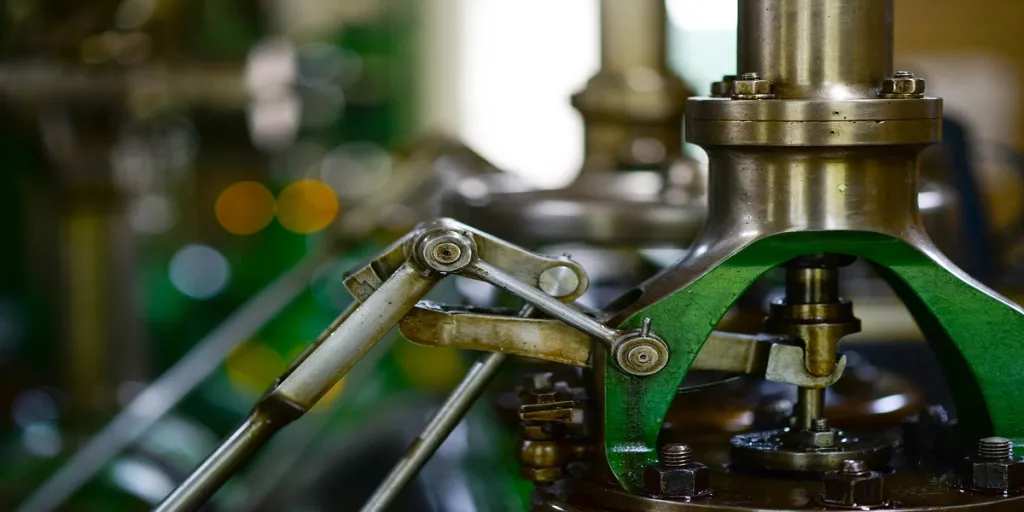The evolution of machines has been significant since their invention in the historic days of the Agrarian Revolution. As the years progressed, technology changed from diesel engines to supercomputers, scanners, and sensors for manufacturing.
Nowadays, new manufacturing machines come with the latest tech, making production and service delivery more efficient. This article discusses the trends that will change machinery automation.
Table of Contents
Machinery market overview
6 trends in the machinery industry
Conclusion
Machinery market overview
The composition of the machinery market includes agricultural, industrial, and commercial machines. These machines can either be automatic or semi-automatic.
The industrial machinery market size was valued at US$ 675.62 billion in 2022 and is predicted to grow to US$ 835.34 billion by 2028 at a CAGR of 3.6%. The increasing growth projection results from a worldwide dependency on machine technology in a wide range of daily applications.
As modern technology keeps evolving, machines are also advancing to make production and service delivery more efficient. In this article, we will look at the trends that will transform machinery.
6 trends in the machinery industry
Reducing downtime with predictive maintenance

As a way to ensure optimum performance in factory machines, manufacturers are opting for predictive maintenance. This type of maintenance involves monitoring machine performance and condition while operating to minimize the chances of breakdowns.
In case a fault is detected by the sensors in the machines, the technicians take the right steps to have it fixed. The technologies which are used in predictive maintenance include the following.
– Infrared thermography: Machines have infrared cameras that detect an abnormal rise in temperatures in the components. As worn-out components tend to overheat, infrared cameras display heat spots on a thermal image. If such faults are detected early, they can be corrected as soon as possible before they worsen and cause huge losses.
– Acoustic monitoring: It helps in detecting any gas or liquid leaks in the running machines. In automotive machinery, acoustic monitoring helps to detect leakages in gearboxes.
– Vibration analysis: Technicians use handheld tools or sensors to detect vibration patterns during peak performance. The devices detect irregular vibration patterns in the machines. Possible problems can include loose mechanical components, misalignment, or a broken motor.
– Oil analysis: It helps monitor a motor’s oil condition, assisting technicians in detecting any presence of contaminants. They check for viscosity, acidity, water content, and loose particles in the oil.
The advantages of predictive maintenance include reduced machinery maintenance costs, failures, and downtime. Also, it aims at increasing production, promoting safety, and generating more profits for the business.
Robotic process automation
Through robotic process automation (RPA) software, businesses are allowing robots to perform operations from manual, repetitive, and other human-related tasks such as data entry and data processing.
Moreover, businesses use RPA to program mechanical robots for them to progress from heavy lifting tasks to doing complex tasks. For example, in a vehicle assembly line, robots are not only welding car panels but also conducting more intricate tasks like installing microchips and wiring.
Artificial intelligence
Artificial intelligence (AI) is the ability of computers or robots to perform tasks like a human being. Many manufacturers are implementing the use of AI in two or more use cases in their manufacturing cases.
AI is being used today in sectors such as automation, warehousing, and distribution of products to consumers. Manufacturers, who are entering into AI systems, can incorporate them to do tasks like machine maintenance, quality control, and demand planning.
In the production line, AI applies to machine learning and automated robots where the systems can operate complex manufacturing functions without monitoring.
Autonomous mobile robots
Technology is now taking automated robotics beyond the production line. Autonomous mobile robots (AMRs) also handle tasks related to logistics. These are automatic machines that can perform tasks involving warehousing and delivery on their own.
Formerly, the robots were autonomous guided vehicles with limited functions and flexibility. Now, after products roll out of the production line, AMRs pack, stack, and arrange them properly on shelves.
These robots perform these functions with the assistance of AI and sensors. AMRs come in handy for manufacturers receiving high demand and production levels. Further, they can save on the costs of manual labor in the logistics sector.
Collaborative robots
There is one advantage to using cobots: they work alongside humans. Cobots or collaborative robots can help reduce errors and increase productivity when manufacturing. Often, they do tasks like quality control and assembly line work. For example, where a human is in an assembly line, collaborative cobots can do small tasks such as attaching screws and other components.
By automating the assembly processes, human workers are free to perform other tasks, hence enhancing efficiency at the assembly line. Additionally, cobots can work all day and night, which increases productivity without sacrificing quality.
Embracing 3D technology
Manufacturers can take advantage of 3D technology to make products easily and quickly. Engineers can design 3D models of new products and print them in prototypes using a 3D printer. This saves manufacturers on the costs of hiring an external product designer. Moreover, waiting for the product to be shipped when complete would be time-consuming.
Another benefit of 3D printing is that it allows for the manufacture of small components of industrial parts. Instead of importing spare parts, with 3D printing, technicians can scan and manufacture them in-house, reducing downtime and costs of getting new parts.
Conclusion
The machinery industry is growing every day technology-wise while creating more opportunities for businesses to thrive. To sum up, the above are some trends that will change the face of the machinery industry in the years to come.




